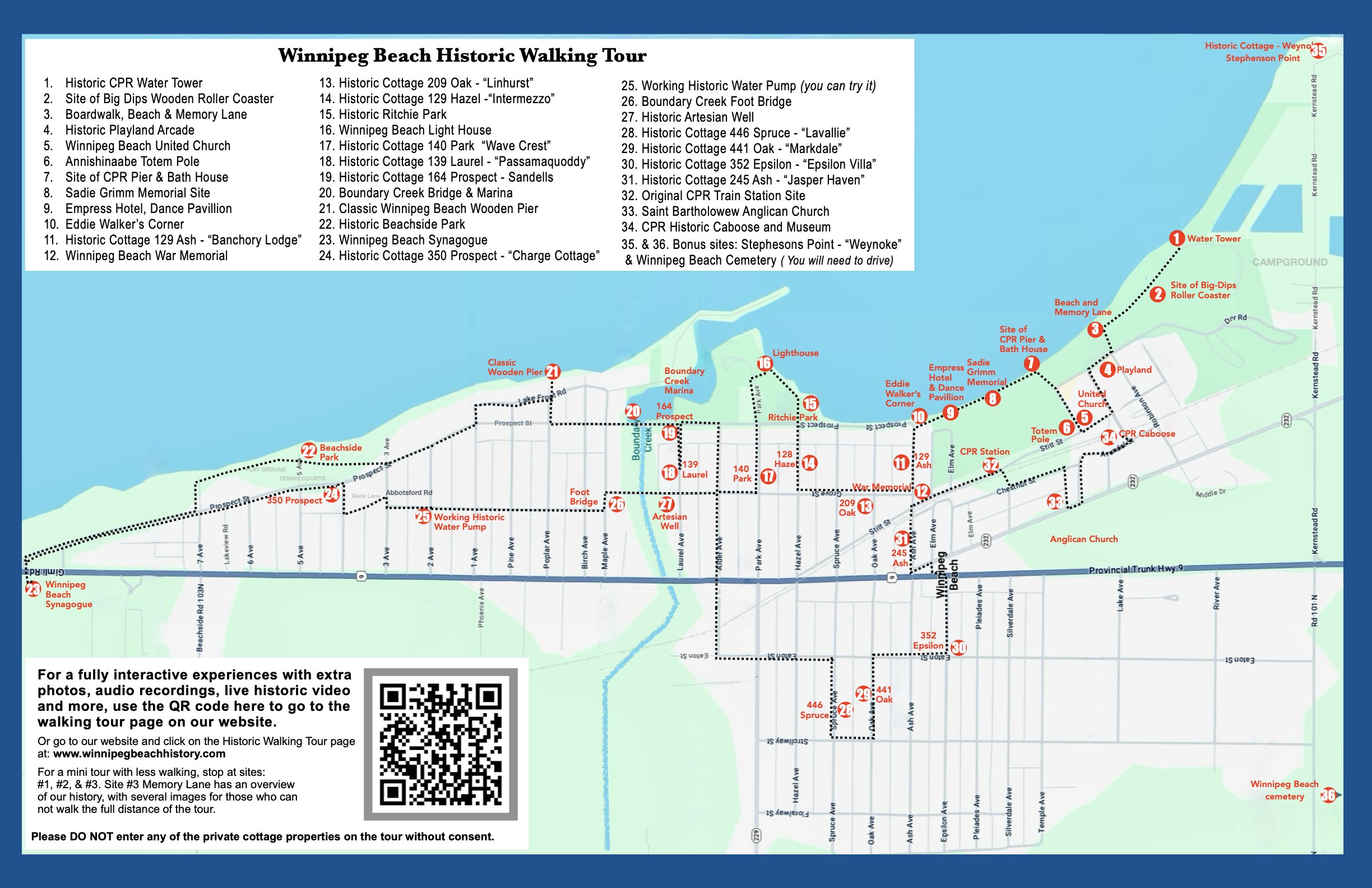The Empress Hotel and Dance Pavilion
The first dance pavilion was constructed quite early on in 1902. About 300 yards north of the first railway station, along the beachfront and adjacent to the picnic grounds, the company built a dance pavilion measuring 80 by 130 feet. It was two stories in height with a double-alcove roof. The original structure included a dance hall 60 feet wide by 120 feet long, built to accommodate 2500 dancers. It was enlarged in 1907 to 161 feet in length since it could not hold the deluge of Winnipeg day trippers which descended upon it. Electric lights now illuminated the entire building. The pavilion also included offices, a restaurant and confectionary and lunch room and kitchen. By 1915, the amusement facilities had expanded to include a moving picture theatre and billiards. Beach Attractions Ltd., established by the CPR in 1904, ran the Pavilion and amusements.
Next to apear on the scene was the glamorous Empress Hotel in 1908. The Empress Hotel was built by the CPR and Edward Windebank, who became the first manager, to provide accommodation for the social elite of Winnipeg, the “better classes”. Socially prominent young ladies stayed here because their maids refused to come out to their cottages, and the hotel provided maid service. The hotel was located 200 feet north of the Dance Pavilion close to the beach, just south of Ash Avenue. The plans of Hooper & Walker provided for a three story hotel, 131 feet long by 68 feet wide. Its magnificence is illustrated by a huge dining room, smoking room, and rotunda, all with fireplaces. Its 65 bedrooms all opened onto 12 foot wide verandas running around three sides of the building on all floors. The hotel was lighted by electricity, had hot and cold water throughout the building, and had fire alarms on all floors. A wood frame structure, it was painted white with green trim. The hotel was renowned for the most lavish bar in western Canada. Mr. and Mrs. Windebank put on a concert every weekend which was the social event of the week. A bonfire on the beach provided the finale, with young men (with banjos and mandolins) and young ladies in canoes providing a sing-song. Patrons had exclusive access to the hotel tennis courts, bowling green, and a sailing yacht. In 1915, the CPR turned over management of the hotel to Beach Attractions, which was already running the amusements. The hotel burned in August of 1935.
The final addition to this area of the beachfront was the new and improved Dance Pavilion in 1924. Because of the dancing craze which began after the World War, the old pavilion was inadequate to handle the crowds. Designed by a CPR architect, the new pavilion was built with a concrete foundation, and fir frame construction. The maple floor provided 14,000 square of dancing area, with a wide promenade encircling it. Turrets ornamented the exterior and a second floor balcony provided views of the lake. In the middle of June, 1924, 3,000 people attended the opening of the largest dance hall in Western Canada. Peavy’s Roseland Orchestra performed for the opening. Dances were 5 cents a dance or 12 for 50 cents. Each dance lasted about two and a half minutes. Local big bands such as those of Marsh Phimster and Don Wright, with Paul Grosney, played the Pavilion. The Moonlight Special and the Pavilion created much of the allure and romance of Winnipeg Beach, which endured for a generation.





